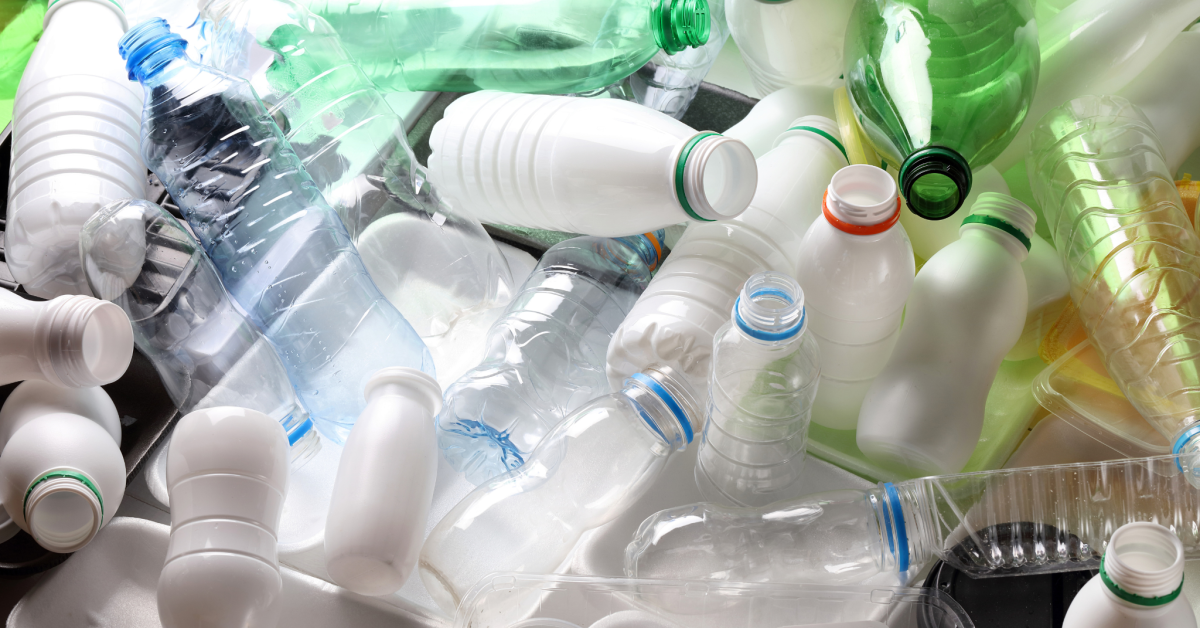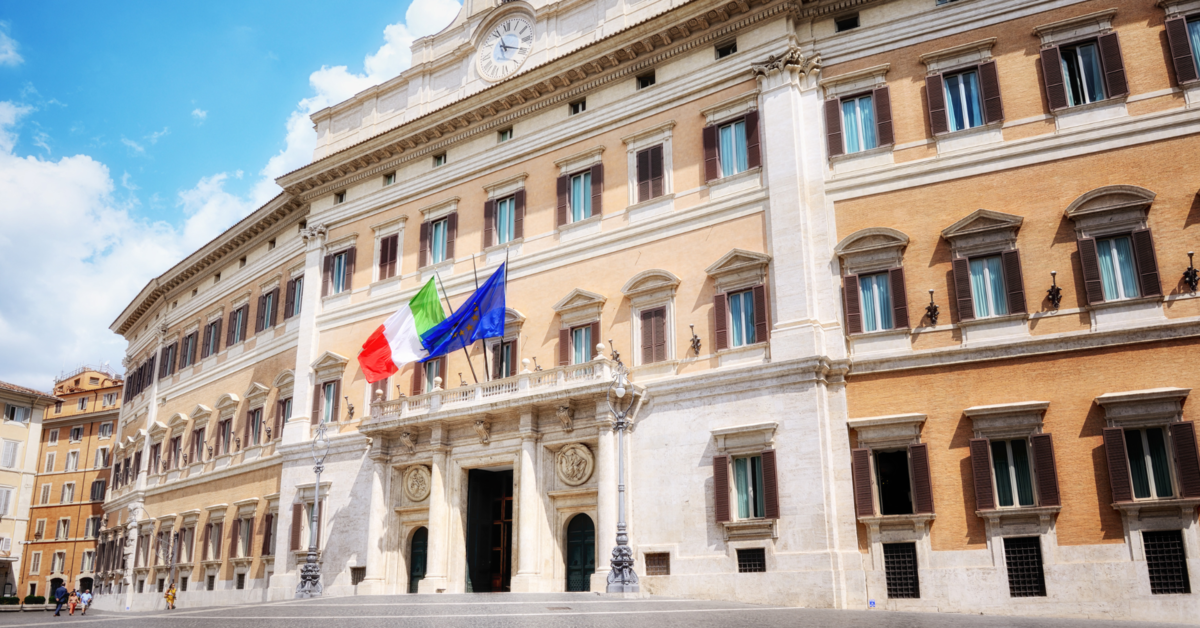The EU Green Deal at a Crossroads
Overview
At a time of geopolitical tensions, energy insecurity, looming trade barriers, and deregulation elsewhere, European CEOs fear the EU’s ambitious green agenda will make European business fall behind its global competitors on innovation, skills, and costs, while at the same time increasing its dependencies on foreign green technology supply chains. As political pressures build up within the bloc, the much-anticipated Clean Industrial Deal must re-balance climate ambition and industrial competitiveness.
The EU Green Deal
There is now a widely held perception that the EU’s decarbonization goals are more ambitious than its global competitors’, creating additional short-term costs for European industry.
“We feel very strongly that the biggest driver for climate action in the future may not be diplomacy or political factors; there is an increasing connection between the climate agenda and the economic agenda, the industrial policy, the trade policy.”
― Li Shuo, Director of China Climate Hub, Asia Society Policy Institute
The European Green Deal (EGD), which shapes the EU’s climate action, is aligned with the Paris Agreement objective to prevent a temperature increase beyond 1.5°C. Under the Fit-for-55 package, greenhouse-gas (GHG) emissions are to be reduced within the bloc by at least 55% by 2030 (versus a 1990 baseline). The current ambition of States under their action plans—nationally determined contributions (NDCs) in UN jargon—put the planet on a 2.8°C trajectory, with Europe heating up twice as quickly as the global average. As new commitments from States up to 2035 are expected to be delivered by the end of February 2025, the EU is considering a 90% emissions reduction target by 2040. For the 2040 target to become law, a formal proposal must be presented to the European Parliament and to the European Council. Current political dynamics within the EU are likely to lead to intense debates around this target, with the current Polish Presidency of the EU Council calling it a “challenge.”
“[The European Commission has to be] much more explicit about combining green transition with a viable business climate.”
― Wopke Hoekstra, EU Climate commissioner
Is the EU achieving decarbonization through deindustrialization?
In 2023, the EU’s GHG emissions fell by 8.3% of 2022 levels. Overall emissions in the bloc dropped by 37% versus 1990 levels, with the EU on a trajectory to cut emissions by 51% by 2030—falling just short of the 55% target. As industrial production fell by 2% and the bloc now accounts for just 6% of global GHG emissions—albeit responsible for 12% of cumulated emissions since the pre-industrial area—concerns have been increasing about the impact of ambition on EU competitiveness and the absence of an industrial dimension to the EGD.
EU industry faces further disadvantages
Higher Energy Costs
EU industry competitiveness—already battered by inflation, inflexible labour markets, and impending trade tensions—is particularly affected by significantly higher energy costs than its competitors. This results from a combination of decoupling from Russian energy supplies, exiting nuclear power generation in some countries, poor interconnection of power grids across the bloc, and high energy taxes. In the first half of 2024, industrial electricity prices in the EU averaged EUR 0.2889 per kilowatt hour compared with EUR 0.178 in the US…and EUR 0.075 in China. In Germany—the EU’s industrial powerhouse—natural gas prices are estimated to be three times higher than in China and almost five times higher than in the US. As a consequence, European energy-intensive industries have been hit hardest, with production falling by 10–15% since 2021, replaced by imports from countries with lower energy costs.
Compulsory Participation in the EU-ETS
Heavy industrial installations must purchase allowances in the EU Emissions Trading System (EU-ETS) and surrender these for their emissions. So far, their emissions had been largely covered through the free allocations of allowances. However, with the introduction of the Carbon Border Adjustment Mechanism (CBAM) and to comply with World Trade Organization (WTO) provisions, these allowances will be progressively phased out, adding to variable production costs. From 2027 onwards, a second ETS (EU-ETS-2) will be launched, putting a price on road transport (and heating fuels), thereby further driving up costs across European supply chains.
An Outsized Administrative Burden
Trust in the belief that, through regulation in the 450 million strong market, the EU would incentivize others to act and create a global level playing field is now being questioned in the absence of clear frameworks to foster investment, innovation and reduce the administrative burden in permitting and in reporting. With over 60% of companies citing regulation as a barrier to investment, cutting red tape is moving up on the agenda of politicians—an endeavour becoming even more urgent at a time when the US is pursuing a deregulation agenda. The reporting burden from the Corporate Sustainability Reporting Directive (CSRD), the Sustainable Finance Disclosure Regulation (SFDR), the EU-Taxonomy Regulation and the Corporate Sustainability Due Diligence Directive (CS3D) is perceived as a further barrier to EU business competitiveness.
EGD policies have already led to unintended consequences
The Car Industry
By 2035, all new cars and vans sold in the EU must be zero-emissions. By the end of 2025, emissions from new cars sold in the EU must already generate 15% fewer CO2 emissions than in 2021. Car producers that fail to meet this target in their fleets are to pay EUR 95 for each gramme of CO2 per kilometre for each vehicle put on the market that is beyond the threshold. EU carmakers have complained that they are faced with the choice of paying fines or pooling emissions with other carmakers. Carbon pooling would result in the purchase of credits from rivals, in effect channelling millions toward Chinese and US EV automakers, resources that—it is argued—would have supported their own investment and innovation plans.
The Aviation Sector
Airlines are covered by the EU-ETS, where they must surrender emissions allowances. Long exempted from paying for emissions permits, airlines will face the end of free allowances allocation by 2026. In addition, the RefuelEU Aviation package aims at reducing the sector’s reliance on traditional jet fuels by setting blending requirements with Sustainable Aviation Fuels (SAF), which typically cost 3 to 5 times more than kerosene. Finally, Climate Commissioner Wopke Hoekstra pledged to raise taxes on air travel, introducing a tax on fossil jet fuel (as part of the reform of the Energy Taxation Directive) and ending the zero VAT rates on international flights. These provisions—combined with increasing reporting burden on both CO2 and non-CO2 emissions—put EU (including the UK, Iceland, Norway and Switzerland) carriers at a competitive disadvantage over non-EU carriers.
Packaging
The March 2024 Packaging and Packaging Waste Regulation (PPWR) opens the door to EU imports of recycled plastics, mainly from China. The low-cost imports of secondary plastics constitute a disincentive for the use of locally recycled content—thereby affecting the economic sustainability of the European recycling industry, while preventing the management of European plastic waste and making circularity a distant prospect.
The June 2024 EU Parliament elections reflected increasing green agenda distrust
With citizens balking at the costs of the green transition, the June 2024 EU Parliament elections saw a surge of support for parties skeptical of the EGD as well as heavy losses for green parties. The EU parliament’s new composition will probably make it more difficult to push through a more ambitious agenda—including the 2040 goal of reducing emissions by 90% versus 1990. Amid increasing economic woes, concerns about energy security and affordability, worries about overreliance on China for green technology supply chains, a rebalancing towards fostering growth within the EU is likely. The influential European Peoples Party (EPP), which includes Commission President Ursula von der Leyen as a member, already called for the implementation of ambitious climate targets not to lead to deindustrialization.
The Draghi report also came as a wake-up call
The “Future of European Competitiveness” report by former European Central Bank head and former Italian Prime Minister Mario Draghi underlines that the EU has a more ambitious decarbonization goal than its competitors, leading to short-term competitive disadvantage for European industry. The report outlines a comprehensive strategy to enhance the EU’s economic performance while advancing its green growth objectives in an increasingly competitive global environment resulting from overcapacity and subsidies. Key recommendations include:
- Integrated Decarbonization and Competitiveness Plan: It emphasizes that sustainability and economic growth should be pursued concurrently, ensuring that environmental and climate goals strengthen, rather than hinder, economic performance.
- Substantial Investment in Green Technologies: To achieve the EU’s climate targets, the report calls for an additional EUR 800 billion in annual investments, equivalent to approximately 5% of the EU’s GDP, with a special focus on increasing energy generation capacity and grid upgrades.
- Reforming Sustainable Finance Frameworks: The report suggests revisiting the EU’s sustainable finance regulations to facilitate the mobilization of private capital necessary for green investments. This includes completing the single market and establishing a Savings and Investment Union to enable the free movement of capital across member states.
- Enhancing Energy Stability and Affordability: Recognizing the gradual nature of the energy transition, continued use of fossil fuels is recommended in the short term to stabilize energy prices, alongside increased joint gas purchasing by national governments. It further proposes a bloc-wide “common maximum level of surcharges” on energy as well as a revision of the Energy Taxation Directive (ETD). The latter is perceived as critical to ensure that energy taxes and carbon prices are consistent with the adoption of low carbon energy.
- Streamlining Decision-Making and Reducing Regulatory Burdens: To foster innovation and investment in green technologies, the report advocates for reducing regulatory complexities with a cut by 25% of reporting obligations and a further reduction for SMEs of up to 50%. It also advocates for a reform of EU competition laws to facilitate mergers of corporations to become powerful global players.
An EU Competitiveness Compass was already delivered
On January 29, 2025 the European Commission released its guiding vision for improving the EU’s competitiveness while staying on course on its Green Deal ambitions: “[that Europe becomes] the place where tomorrow’s technologies, services, and clean products are invented, manufactured and marketed, as we stay the course to climate neutrality.”
The Competitiveness Compass promises an initial set of more detailed EU strategies and laws over the next two years and in three key action areas:
- Addressing the innovation gap (between the EU, the US, and China): The Commission makes a strong case for building up advanced technology sectors. It wants to support EU start-ups, enable EU scale-ups, and help traditional industries embrace innovation.
- Establishing a roadmap for decarbonization and competitiveness: Decarbonization is positioned not as an end in itself but as a key driver of economic growth, and the alignment with competitiveness will be set out further in next month’s Clean Industrial Deal (see below). The Commission re-commits to the existing drive for climate neutrality by 2050. Priorities include reducing energy costs, incentivizing companies to decarbonize, supporting energy-intensive industries, and using circularity to improve resource efficiency.
- Reducing dependencies and improving security: The Commission also wants the EU economy to become more resilient, prepared, and defense-oriented. This means diversifying critical supply chains, using trade and economic security tools, and preferring EU supply in some public procurement.
All three areas will be enabled by broader measures. The Commission promises a major drive to simplify EU regulations, old and new—though not a fundamental overhaul—as well as action to make the EU Single Market work better and in new areas, including energy. It will facilitate better coordination of EU-level and national action in key areas, including on electricity grids. It will take further action to improve skills and labor market participation. Importantly, it will push measures to help EU-based private capital finance improve competitiveness, as well as make better use of funds in the EU budget.
Simplification rather than deregulation appears to be the key focus: The Commission will simplify existing rules (and ensure new rules are simple) as one of five cross-cutting “enablers” of its efforts. It involves cutting red tape: reducing the administrative burdens on business, for example, by reducing the amount of information which must be reported by companies, and/or by reducing the number of companies which must send the information. Responding to earlier calls for a “simplification revolution,” EC President von der Leyen already triggered a legislative procedure to simplify the CSRD, the Corporate Sustainability Due Diligence Directive (CSDDD), and the EU taxonomy through a new “simplified omnibus regulation.” (expected on February 26, 2025).
What Next: Will the much-anticipated Clean Industrial Deal deliver?
In 2023, shocked by the massive investments and subsidies under the US Inflation Reduction Act (now suspended), the EU introduced the Net Zero Industry Act which specifically aimed at strengthening the EU’s green industrial base, reducing reliance on non-EU technologies and accelerating the transition to a climate neutral economy. The NZIA, however, could never match the US (and Chinese industrial policies) as it was strong on targets but weak on mobilizing new funding streams. It also failed to sufficiently address industrial energy challenges and overall EU industrial competitiveness.
In her successful re-election bid, European Commission President von der Leyen pledged to introduce a Clean Industrial Deal (CID) in the first 100 days of her second mandate in order to tie green goals closer to industrial concerns as outlined in the Political Guidelines for the Next European Commission.
The CID—building on the Draghi report recommendations—is to be unveiled on February 26, 2025 (yet to be confirmed). It aims for the EU to remain an attractive location for manufacturing, including for energy intensive industries, and promoting clean tech and new circular business models.
- Establishing a predictable and simplified regulatory environment.
- Accelerating access to finance for industrial projects.
- Enhancing skills to support the industrial transition.
- Promoting open trade to ensure resilient supply chains.
A draft European Commission paper includes measures addressing:
- The promotion of advanced technologies: Emphasizing the development and integration of AI, biotechnology, and robotics to drive innovation and productivity for European industry.
- Affordable clean energy: Electrification is considered pivotal to both rapid decarbonization and global industrial competitiveness. Investment in low emissions power generation, storage, and grids take priority. A modernized EU supergrid is at the heart of the plan to bring down power prices for industry and households. Governance for an Energy Union will also be developed. An Industrial Decarbonization Accelerator Act will support energy intensive industries throughout the transition. It is also expected that planning, tendering, and permitting processes will be streamlined across the bloc to expedite the deployment of clean technologies. The Commission will accompany the CID with an Affordable Energy Action Plan, which will aim to reduce energy costs for both households and businesses. In Q1 2026, the Commission will present an Electrification Action Plan and European Grids Package.
- Industrial coordination and investment: Seeks to harmonize industrial policies across the bloc, encouraging coordinated investments. Leveraging public investment through the European Investment Bank (EIB) and domestic public funding institutions is deemed essential to improving the risk/reward profile of critical infrastructure. EU-wide subsidies for European EV uptake and reversing the fines automakers face to reach emissions targets might also be included. The Commission has already launched a strategic dialogue with the automotive sector. This dialogue will help to shape a future EU industrial action plan for the automotive sector. To improve the acceptability of pursued policies, the just transition for workers and regions dependent on high-emission industries will also be supported.
- Support for innovative start-ups: Building an ecosystem that fosters innovation and ability to scale and compete globally.
- A Clean Trade and Investment Partnership will be established to help secure the supply of raw materials, clean energy, and clean tech from across the world.
As these effort move forward, please reach out to Edelman Public & Government Affairs for in-depth, tailored analysis of what changes may mean for your industry and business.
Materials presented by Edelman's public & government affairs experts. For additional information, reach out to Nikolaus.Schultze@Edelman.com



